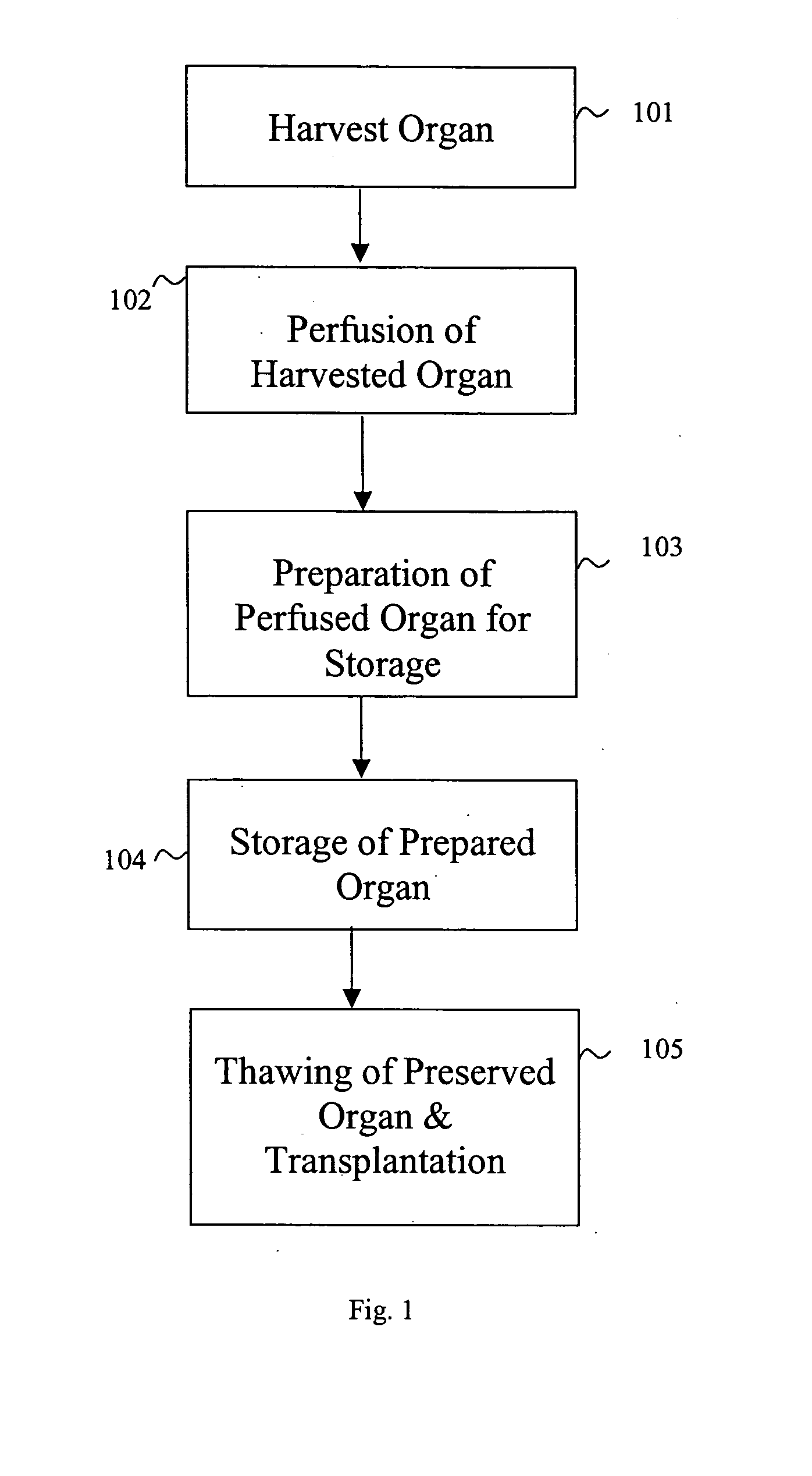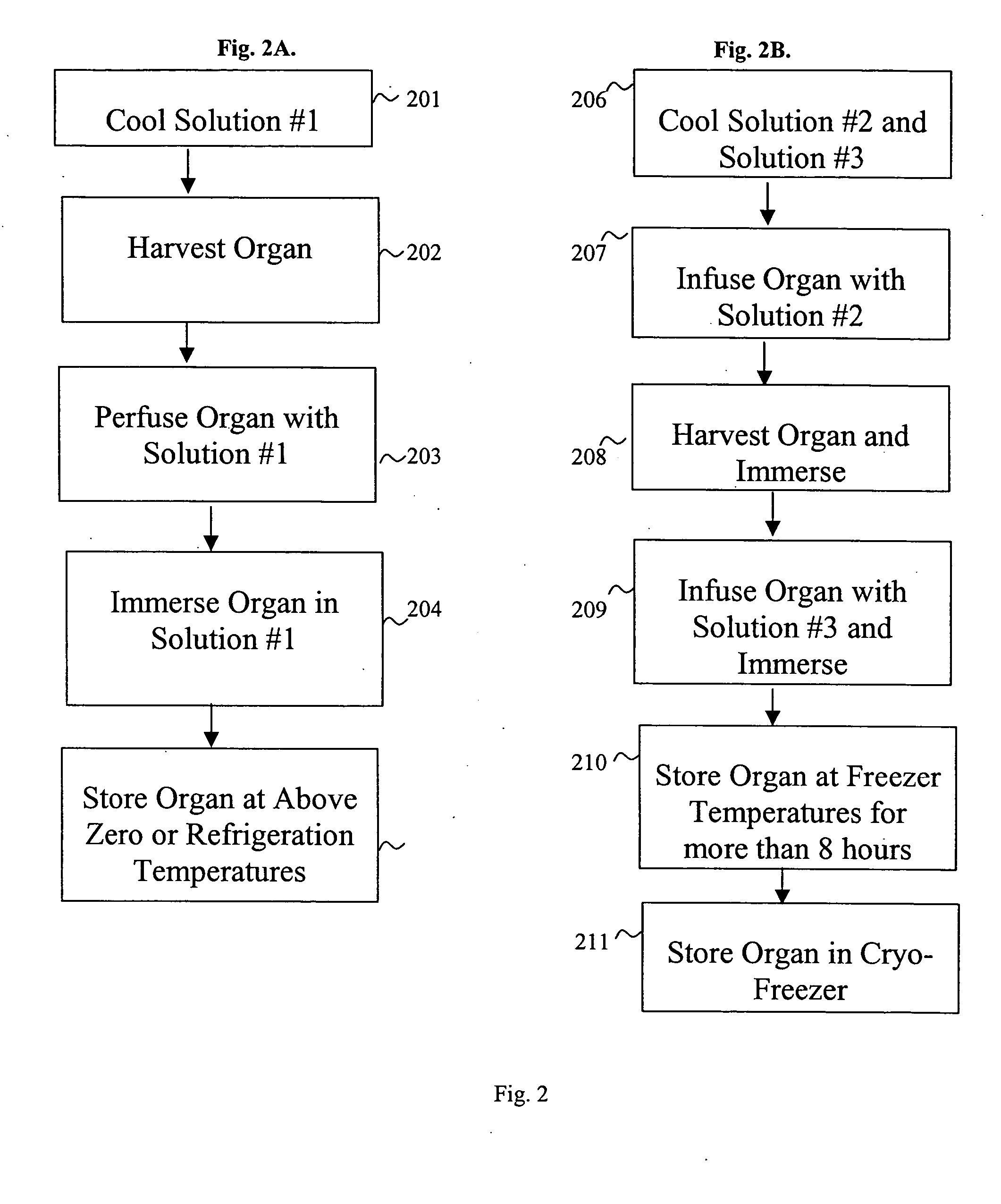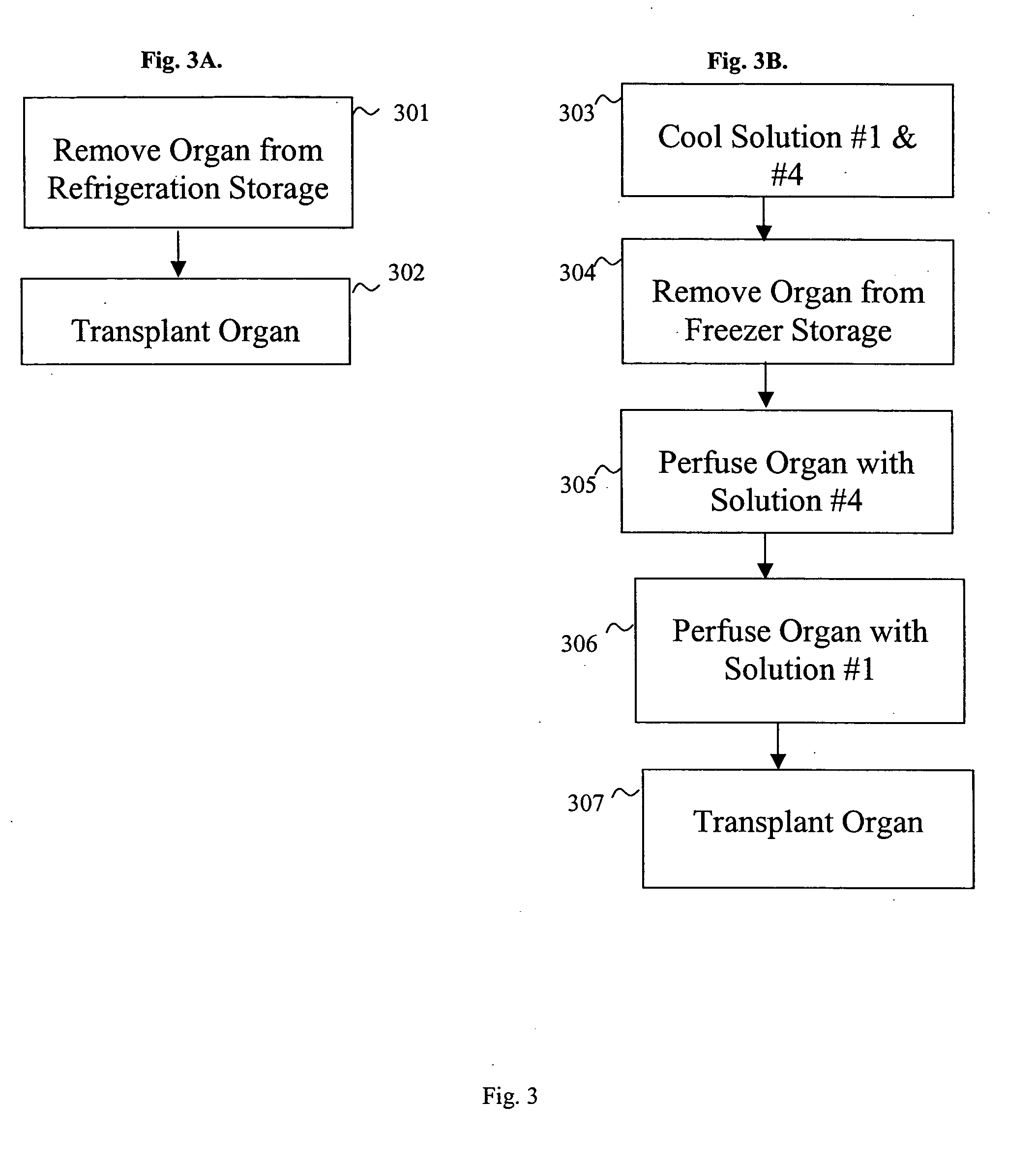Methods and solutions for storing donor organs
a donor organ and organ technology, applied in the field of organ storage systems, can solve the problems of reducing the ability to generate energy, cellular damage, and reducing the time between the two events, and achieve the effect of reducing interstitial edema
- Summary
- Abstract
- Description
- Claims
- Application Information
AI Technical Summary
Benefits of technology
Problems solved by technology
Method used
Image
Examples
example 1
[0048] The donor rat kidneys were perfused for 30 minutes at 2° to 4° C. with Solution #2 which is the same as Solution #1 except that sodium chloride is at 2.5% and amounts of PEG and sucrose are increased. Then the donor kidneys were perfused at 2° to 4° C. for 30 minutes with Solution #3 (cryopreservation solution). The kidneys were placed into a refrigerator's freezer at about −20° C. Kidneys were stored for days, but could be stored for much longer periods or weeks or months.
[0049] The kidneys did not freeze because of the use of the perfusion solutions and the system utilized as indicated above.
[0050] After removing the kidneys from the freezer, the kidneys were perfused with a washing solution (Solution #4), which is identical to Solution #2 except that the amount of NaCl is 10 mM. Finally, kidneys were perfused for 30 minutes with Solution #1 and transplanted. The transplanted kidneys were observed to turn pink in color as they were reperfused with blood and immediately pr...
example 2
[0054] The following is a description of a procedure in accordance with the invention for organ storage of four rat kidneys at temperatures as low as about −80° C. The same solutions described herein may be applied for storage at temperatures generally in this range.
[0055] Each of the kidneys can be dissected in a standard manner isolating the renal flow with silk. The venous drainage is opened which may be accomplished usually by sectioning the renal vein. A 27 g needle may be inserted in the isolated arterial system so flushing of the kidney can start immediately. It is desirable to avoid air circulation or the introduction of air bubbles into the system during this process. An infusion with 1 ml of volume of the loading hypertonic solution (Solutions #2) may be performed in about 1 minute at 2 to 4° C. Then the organ is removed and immediately immersed in the same solution at 0 to 2° C., and is maintained at this temperature in the loading solution for 30 minutes. Then the infus...
PUM
 Login to View More
Login to View More Abstract
Description
Claims
Application Information
 Login to View More
Login to View More - R&D
- Intellectual Property
- Life Sciences
- Materials
- Tech Scout
- Unparalleled Data Quality
- Higher Quality Content
- 60% Fewer Hallucinations
Browse by: Latest US Patents, China's latest patents, Technical Efficacy Thesaurus, Application Domain, Technology Topic, Popular Technical Reports.
© 2025 PatSnap. All rights reserved.Legal|Privacy policy|Modern Slavery Act Transparency Statement|Sitemap|About US| Contact US: help@patsnap.com



